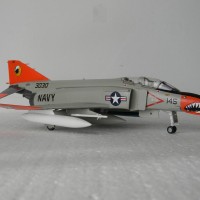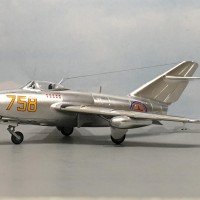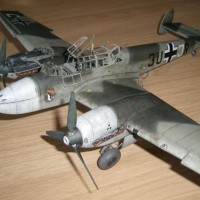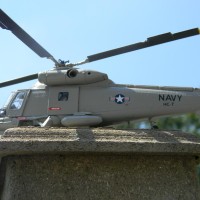Travelling globally at Mach 3.5: the future looked so limitless! Boeing 7207, America's Supersonic Transport of the 70s!
Europe's Concorde, the Soviet Union's Tupolev Tu-144 - and the USA's Boeing 2707: this is what the world of supersonic passenger aviation would have looked like from the 1970s onwards according to US plans. It was obvious that the American supersonic design would be impressively superior to the competition in terms of impression and performance!
While both the Concorde and the Tu-144 were around 60 metres long, the 2707 would have had an impressive 96 metre fuselage length. The two supersonic projects that were actually realised flew at a maximum of 2.3 Mach, while the US SST (Super Sonic Transport) could have reached 3.5 Mach. Ultimately, Boeing did not want to dwell on the 100 or so passengers carried by the Concorde and Tu-144, but aimed to at least double this figure: according to Boeing's plans, 250 to 300 passengers would be able to travel three times faster than sound in the future.
The basis for these ambitious goals was the SCAT project. The US government subsidised the prestigious ‘Supersonic Commercial Air Transport' project with generous funding. Launched in 1963 under President Kennedy, SCAT was intended to ensure that the USA would play at the top of this league. Even the soon emerging uneconomical operation of an SST would have been accepted in times of the Cold War in the name of the prestige gained!
In 1963, a competition for a future SST was organised with the promise that 75% of the development costs would be advanced by the state. At the same time, a second competition was launched to provide the necessary high-performance engine.
Boeing presented an initial design the following year: the internally named Model 733 was intended to meet the challenges of supersonic flight with the concept of the swing-wing. Competitor Lockheed, on the other hand, planned a delta wing modelled on the Concorde from the outset. They had too much respect for the complex mechanics and the additional weight involved - and rightly so, as Boeing was to learn.
Of the participating companies Boeing (Model 2707), North American (NAC-60), Douglas (Model 2229), Convair (Model 58-9) and Lockheed (L-2000), only Boeing and Lockheed were soon left in the race. In the next development phase, designated 2707-100, Boeing retained the 733's pivoting wing, but significantly increased the dimensions for reasons of economy: up to 300 passengers were now to be accommodated in the fuselage, which was extended to 97 metres, and a lowerable nose was also added, following the example of Concorde and Tu-144. This was even to be equipped with two joints: the lowered nose with the radome would be tilted back into a horizontal position with an additional joint.
The next concept stage 2707-200 had additional canard wings in the front fuselage area, which had become necessary after wind tunnel tests for stability reasons.
In December 1966, the race seemed to be over and the decision to build the aircraft was finalised. The FAA announced Boeing as the winner of the SST competition. Three years later, the Nixon administration authorised the construction of two prototypes; the powerful engines were to be supplied by General Electric. In the meantime, GE had won the engine tender with the 222kN GE4/J5P. Incidentally, the 290kN turbine with afterburner would have consumed 35,000 litres of paraffin per hour, ‘only' 14,200l/h in normal operation
There were already concrete plans for the first flight and acceptance of the new SST: the maiden flight was to take place in 1973, and the start of production was considered realistic for 1973/74. No wonder, since 26 airlines had already placed firm orders in 1970, and 122 Boeing 2707s were on order at the time.
So it may have come as a surprise to some that the US Congress ended the entire programme in 1973. There were two main reasons for this: firstly, wind tunnel tests revealed persistent technical problems that had to be resolved before production could begin. In the course of this, Boeing had now completely cancelled the pivoting wing in the latest 2707-300 version and returned to a pure delta wing. Furthermore, the length had been shortened for weight reasons and the number of passengers reduced to 234 seats - which in turn would lead to a significantly less economical operation.
The second reason why a Boeing 2707 was never to take to the skies can be found in the energy crisis that broke out at the beginning of the 1970s. The rising price of oil accelerated the realisation that SSTs were simply not profitable to operate under these conditions. The willingness of passengers to pay significantly higher prices for a super-fast flying experience had probably also been overestimated, and this was also to prove true for Concorde and Tu-144. Boeing would have no more luck with the 2707 - but with the 747, which was developed at the same time, it could leave its mark on the history of passenger aviation!
Kit and building process
The Atlantis parts on which this model is based, from a ‘reboxing' of the Monogram kit first released in 1968, are thoroughly uncomplicated fun. The few parts can be quickly assembled into an appealing reproduction of the planned SST, whereby care only needs to be taken to keep the simple mechanism of the swivelling wing functioning.
The casting of the parts is excellent, they are pleasantly thin-walled and ensure that the many trailing and leading edges are wonderfully sharp and precise - because this is crucial for the slim and elegant appearance in this really small scale. The decals are also of the best quality in terms of printing and workability.
For these reasons, I can summarise the Boeing 2707 -SST project from Monogramm/Atlantis as an experience- and knowledge-rich modelling pleasure and can only warmly recommend this little adventure to anyone interested!



























Nice work, Roland. You really dressed that old kit up well.
A friend of my dad worked on this.
One other persistent issue that helped cancellation of this program was noise.
The sonic boom would be a big problem that might be solved by the x-59
Very cool Roland. Can you imagine what it might have been like if we had actually gotten this into production. Of course, the reality is that it would have been too expensive, just as the Concorde was, but it's fun to think of the possibilities.
Excellent build of a uniquely chosen subject, Roland! Very informative writeup, too!
A wonderful build of this unique aircraft, Roland @rosachsenhofer
Great article, Roland, one of the many mad ideas from the 1960s.
Man - what a futuristic design that was! Nicely done.
Nice!
Thank you all for these much appreciated and welcome responses! It's really very motivating and encouraging!